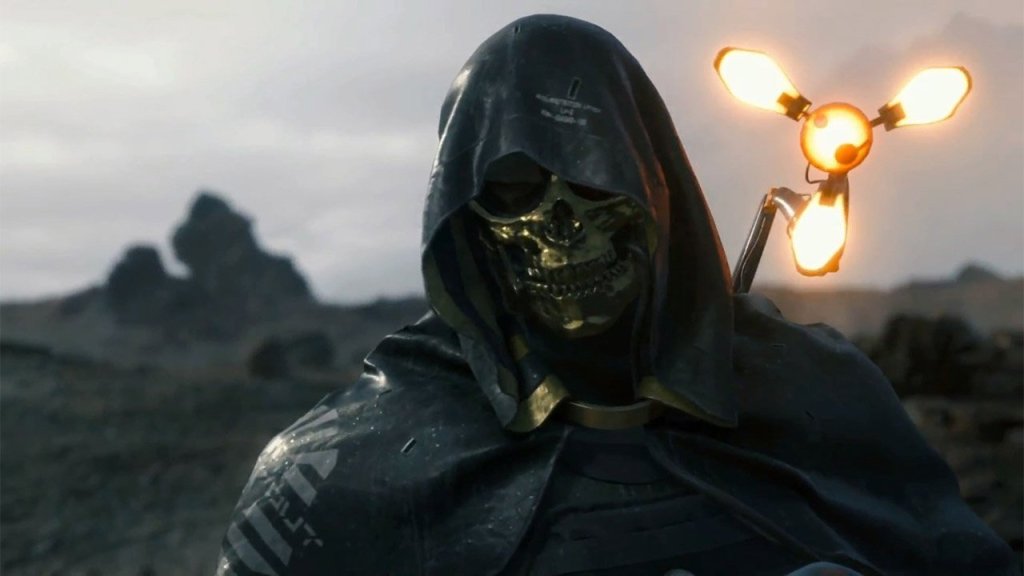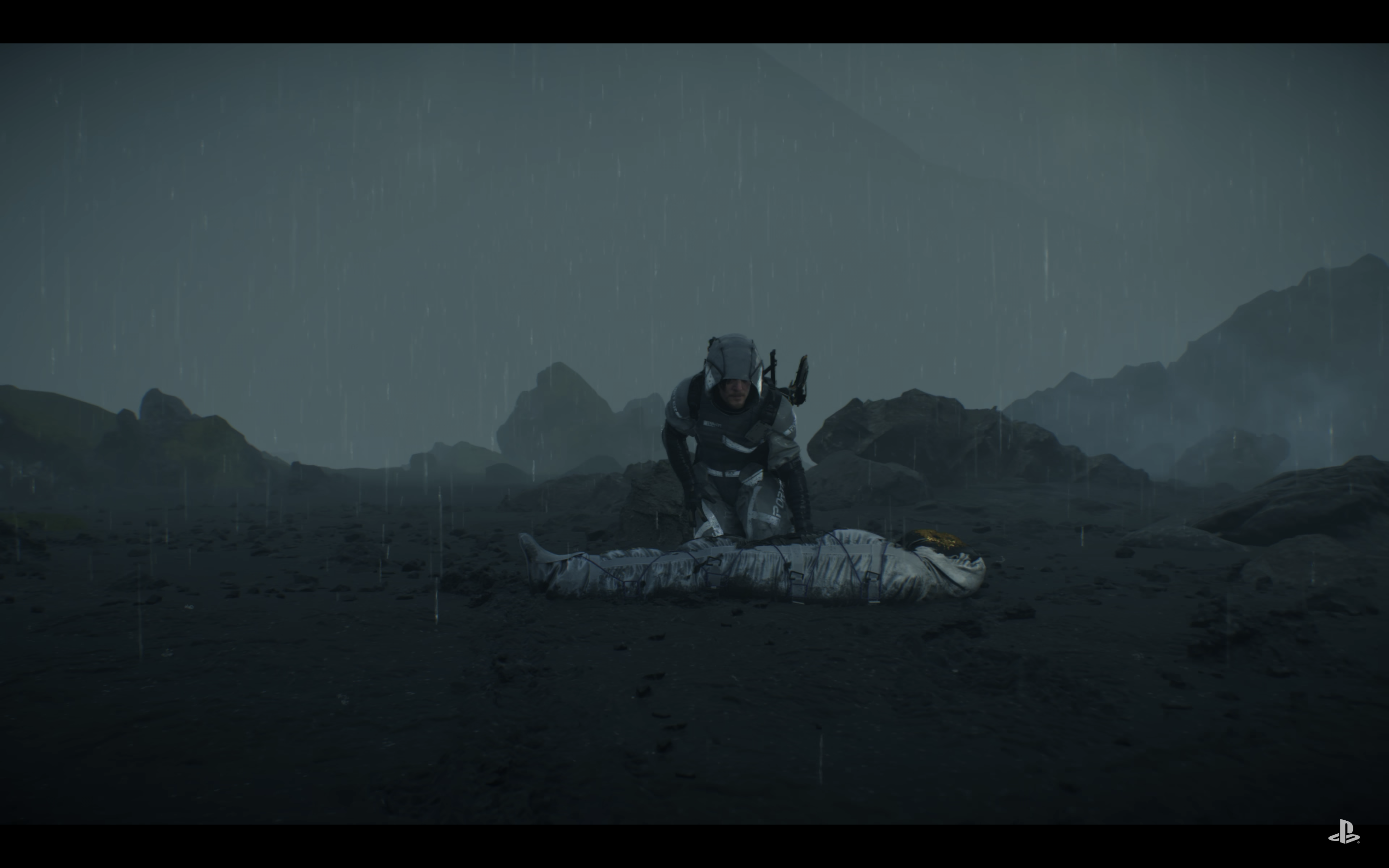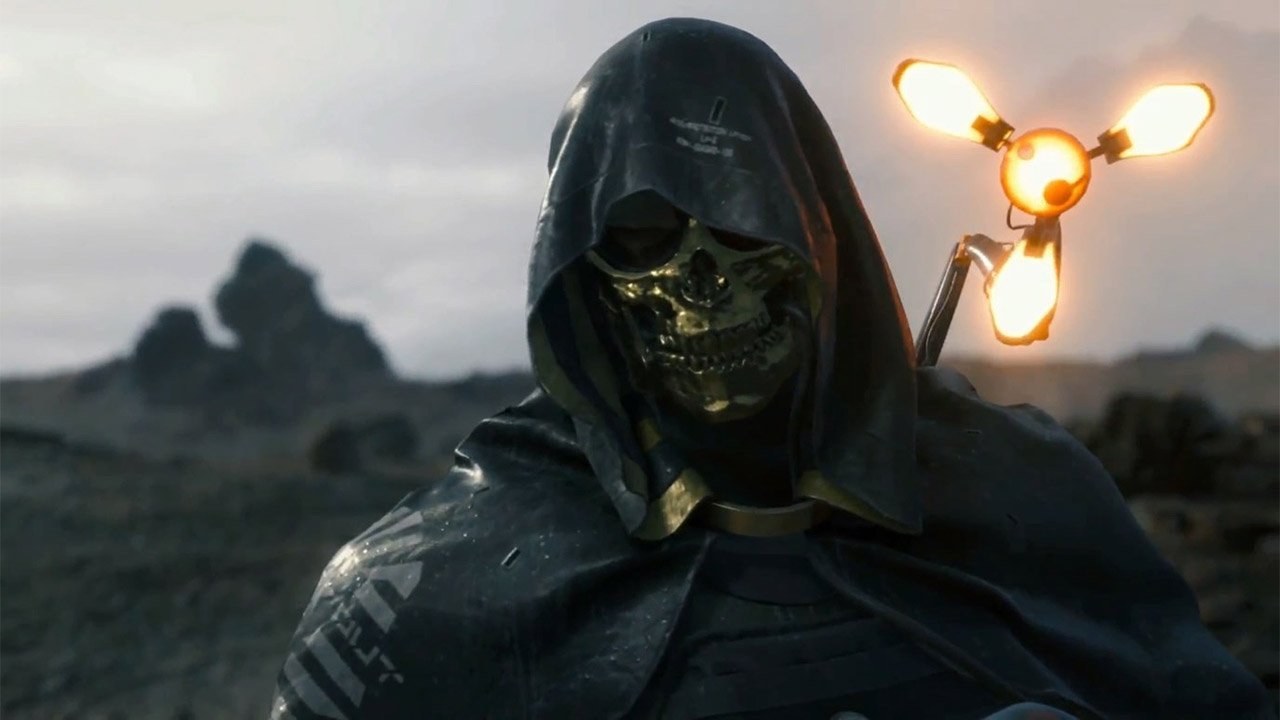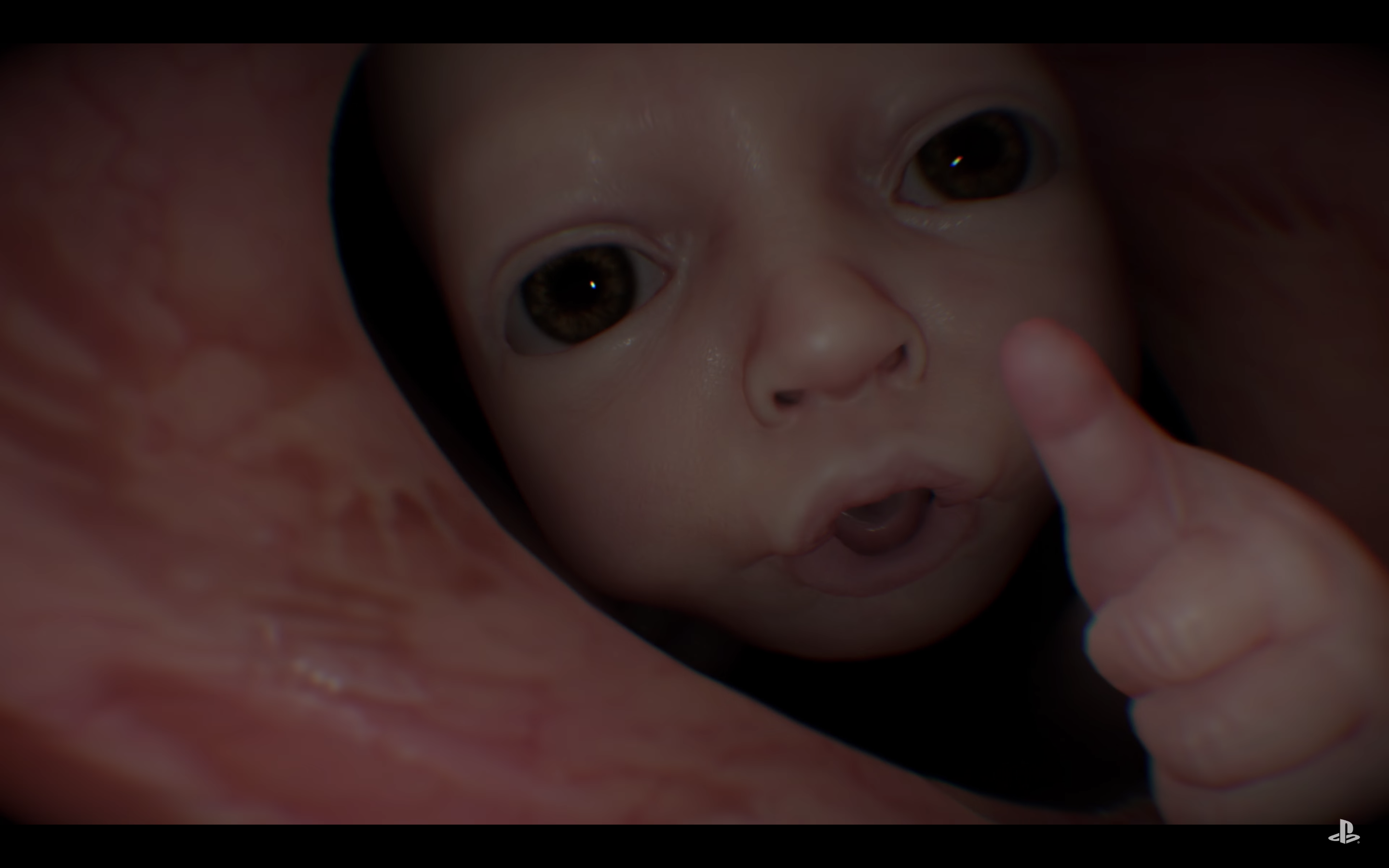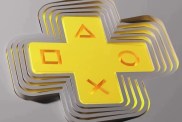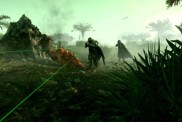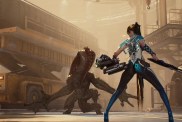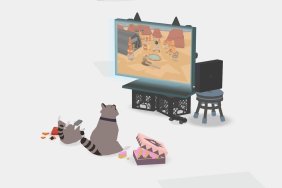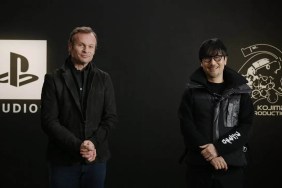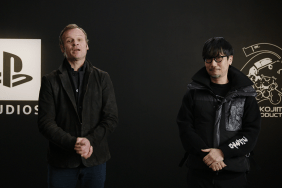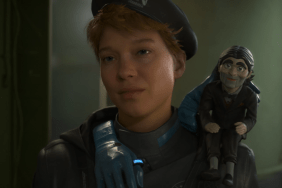The most recent Death Stranding trailer has left us with more questions than answers. While Kojima’s game seems as enigmatic as ever, the veteran game developer has a history of hiding things in plain sight. Death Stranding’s promotional material closely aligns with that of Kojima’s last effort, Metal Gear Solid V: The Phantom Pain, in that we are shown events out of chronological order and potentially given out of context information about the game’s plot. Something that has continuously appeared throughout each snippet of Death Stranding is mythological symbolism, specifically Greek and Egyptian. Whether this is related to highly relevant plot details or is simply an appreciation for the imagery and themes of these mythologies, it is certainly something worth paying attention to.
From the Greeks
The latest teaser from the Tokyo Games Show introduces the newest addition to the cast: “The Man in the Golden Mask,” performed by Troy Baker. This is not the first instance in which we have seen a golden mask, as there is a mummified-looking corpse in the E3 2017 trailer with a similar one. The mask appears to have some sort of draw or effect on the chiral world, as it is seen to pulse chaotically before being dragged into what we can assume is another dimension by the chiral entities. The golden mask calls to mind the death masks of Mycenae—specifically, the Mask of Agamemnon.
This mask is said to be the King’s in Homer’s Iliad. The mask symbolizes the continuation of life after death in which a person maintains their thoughts and memories. This is a mechanic that Kojima has stated Death Stranding will iterate, as death will trigger a “voidout,” which fast forwards time in a specific zone. The ability to move between these dimensions unharmed seems like a valuable asset and it appears Sam, played by Norman Reedus, possesses this unique skill. In Greek mythology, the figure Charon’s duty is to the transport the dead across the river Styx, which divides the world of the living from the underworld. He’s a sort of porter, which ties into both Sam’s occupation throughout the game as well as his name.
In various trailers Sam can be seen escorting what looks like mummified bodies (both dead and alive) throughout the world(s) of Death Stranding. During the E3 2018 trailer, the phrases “give me your hand in life” and “give me your hand in death” further adds to the game’s theme of links and connections. Kojima has previously stated that Death Stranding is about connections, saying that it’s concerned with “what you call ‘strands’ in psychology—how people are connected.” These same links are also important within the context of death and the afterlife in mythology. The dead that are not buried are left to wander and are trapped between two worlds endlessly. If we consider the black chiral figures (humanoid, mirrored beings that spring up from the ground in Death Stranding’s trailers) that appear during incidents that trigger voidouts, they do not appear to be specifically malicious; in fact, they are frightened by the chiral lion summoned by The Man in the Golden Mask.
In Greek mythology, humans must suspend time in order to commune with the dead, as the underworld operates beyond both human perception and time. This sounds very like Sam’s immunity towards the Timefall phenomenon. At the end of the E3 2018 trailer, Léa Seydoux’s character remarks, “A Cryptobiote a day keeps the Timefall away.” She then proceeds to eat a larvae-like insect, supposedly called a Crytobiote. Cryptobiosis is the halting of all metabolic processes; everything about an organism effectually pauses, including aging. This could be the scientific reasoning behind Sam’s capability to traverse other dimensions with little to no harm or impact to his age. Sam’s immunity to the Timefall is the reason he is tasked with escorting humans between worlds.
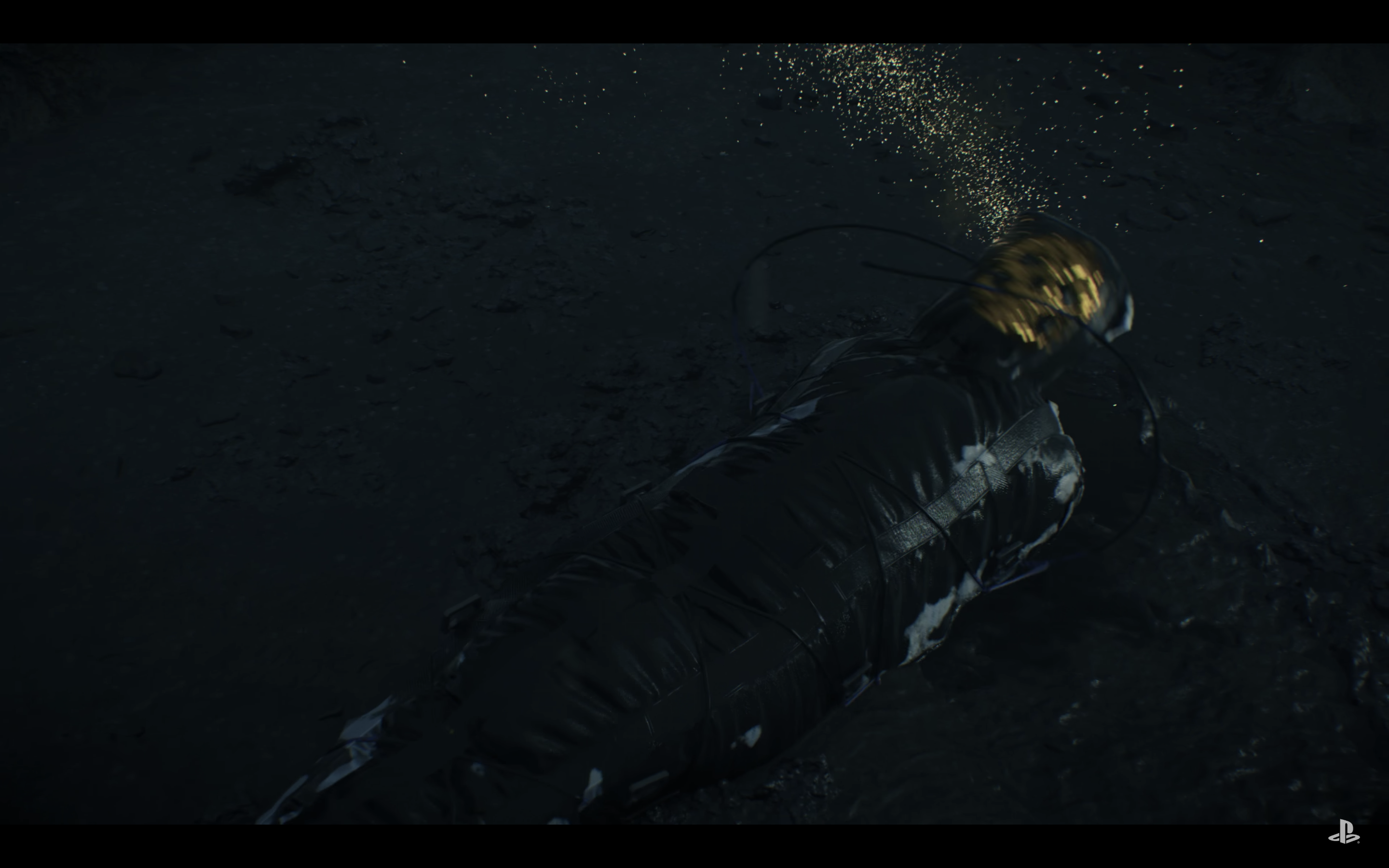
From the Egyptians
The idea of perception plays a major role in Egyptian mythology. One of the most famous stories is the story of Horus’ left eye. The chiral detector seen to be worn by various characters in Death Stranding (affectionately named patapata kimi by Kojima) resembles an eye-like appendage, and is shown to be always on the characters’ left side. It is also linked to the babies within their pods. The Eye of Horus is intended to defend against evil and to safeguard the deceased during the afterlife. The chiral detector functions similarly throughout the game as it warns Sam of chiral entities in the vicinity. The world of Death Stranding appears to be distorted, as the realm of the living has converged with the dead. This explains the chaotic presence of the black chiral; they are the lost souls like that of the Egyptian underworld, the Duat. Beings that have not yet completed their journey into the world of the dead, much like in Greek mythology (of which there are many similarities to), there is an arduous voyage required to get to the afterlife. The converging of worlds might be the “fourth explosion” that Sam speaks of.
Death Stranding uses the Decima Engine, which is the engine Guerrilla Games developed in order to make Horizon Zero Dawn. However, it wasn’t named until Kojima decided to use it for Death Stranding. With Decima being the Latin title of the Moirai—the personifications of destiny—responsible for birth. this does not seem to be accidental. There is a strong emphasis on birth and rebirth throughout what we have been shown in Death Stranding’s trailers thus far, and Kojima has even stated that one of the game’s major themes is “the idea of life and death being connected to each other.” It has also been revealed that after the main character dies, there is a continuation of gameplay rather than a traditional “game over” screen. This is the aforementioned change in landscape caused by a voideout. After a Timefall, the baby Sam carries is seen to be transported inside him in the afterlife/purgatory that Sam moves to upon the player’s death. The baby is most likely located inside Sam’s stomach, which ties in with the ancient Egyptian belief of the esophagus leading to the womb. As seen in various mythologies: “death is not the opposite of life, but a part of it.” The baby seems to be the key to continuing Death Stranding after Sam’s death.
In Egyptian mythology, upon death the body is split into two: the Ba and Ka. The former represents the soul, while the latter is the vessel or body. In the Book of the Dead, the deceased can return to its mummified corpse and interact with the outside world in a non-corporeal form. Could this be an explanation of how the chiral figures impact the in-game world? Aside from his death mask, The Man in the Golden Mask also wears a pharaoh-like cowl. If studied closely, one can make out what is potentially an Uraeus insignia on his right shoulder. This insignia appears as a cobra, symbolizing royalty and holiness in ancient Egypt. In addition to this, Rosalie David (an Egyptologist) states that in death one can have “access to a multiplicity of forms that could be used in the next world.” These forms are said to be able to help the deceased to take revenge on his enemies. This could be an explanation for the chiral lion that The Man in the Golden Mask summons and appears to have full control over in the latest trailer for Death Stranding.
This is not Kojima’s first foray into ancient Egyptian imagery; Zone of the Enders features many bosses linked to Egyptian myths. In addition, the protagonist’s mech was named after Jehuty, an Egyptian God whose name is reconstructed from the ancient Greek form “Thoth.” Whether this symbolism will have any bearing on the plot of Death Stranding remains to be seen, but it seems that Kojima is at least inspired by the imagery and perhaps the themes conveyed by these myths.
[Source: Religion and Magic in Ancient Egypt by Rosalie David]
